| Download Example 1 Reverb | |
| Download Example 2 Reverb Pushing Compressor | |
| Download Example 3 Cycling through effects |
Way back when dinosaurs
roamed the
coffee houses, Trace Elliot
made one of the very first
acoustic guitar amps. They
were small, easy to use,
had a vocal input, and
let you cover a small-tomedium
room without
breaking a sweat.
Fast-forward a couple
of decades: There are a
lot of acoustic amps for
those that ply their trade
in small theaters, clubs,
coffee houses, and the
like. But Trace has jumped
back in the fray, with the
same striking looks as the
original, but loaded with
oodles more features and,
in the case of the TA200,
packing power to spare.
You Can’t Judge an
Amp By Its Cover
When I picked up the
TA200 for this review, I
was rather daunted. “It’s
huge!” I cried woefully,
looking at the case. I lifted
it, expecting to have to lug
it out to my car, and was
very pleasantly surprised—it’s not heavy.
In fact, it weighs a comfortable 20 pounds.
For an amp that pumps 200 watts through
four 5" Celestion speakers, that’s incredibly
light. And when I unzipped the top of
the rather plush and sturdy fitted-canvas
cover, I found a modest-sized, attractive
black cabinet with a familiar curved front
and black metal grille.
Sporting radioactive-green accents, the
TA200’s front panel has two channels,
one with an instrument input and one
with a combination XLR 1/4" jack. The
instrument jack is a smart stereo input,
so if you have a stereo pickup and you
use a TRS cable, the jack splits the stereo
signal between Channel 1 and Channel 2.
However, if you need to use Channel 2 as
a mic input, it turns the stereo signal into
a mono signal. Very clever.
The front panel gives you the usual set
of Gain, Lo Trim, Hi Trim, Notch, the
effects' Parameter and Setting controls,
plus a 6-band EQ and a Master Volume.
There are also several LED indicators
that relay information about the amp’s
functions. Conveniently, the Trim controls
all have a center detent setting you can
feel. When the trim controls are set to the
detent position and the Shape control is
off, the frequency response is flat.
On the back panel, you’ll find a power
switch and AC cord socket, a switch to
turn on back-lighting for the front panel,
sends for plugging into a mixing board,
returns for direct connection to the stereo
power output section, a ground-lift
switch, two balanced DI outs with a pre/
post switch, a jack for connecting a tuner,
and (drum roll please) the 8-pin DIN
socket for the really big and impressive
AFC-6 foot controller.
One knob you don’t have is a control
for the built-in compressor, which is a
soft-knee circuit with what Trace calls
adaptive attack and release times. Here’s
how it works: The TA200 has Gain knobs
on each of the channels, and by turning
up the gain you increase the amount of
compression on the signal. Compression
can add a nice flavor to acoustic guitar,
help you pop out in a mix, or help you
contain an erratic dynamic range—all
good things. The compressor has four
stages, and an LED indicator shows you
where you are. Unlit means there is no
or very low signal; green means signal is
present, below the compressor threshold
and thus uncompressed; orange means
that the signal is high enough for the
compressor to kick in; red means a
very high signal is present, and you’re
in danger of clipping and distorting.
The higher you turn the gain, the more
compression you add. Clever idea, but
I doubt I’m the only person who would
appreciate having a way to turn it off in
some situations.
For feedback busting there’s a tight-bandwidth
Notch filter and a Phase
switch. When feedback starts up, you
slowly turn up the Notch knob until it
goes away. That’s pretty darn idiot proof,
and fairly effective, but if that’s not
enough, then you can use Phase switch to
reverse the phase of either channel, and
that frequently does the trick. When phase
is reversed, a blue LED lights up. One
cool feature about the AFC-6 foot controller
is that Phase is among the controls you
can switch from the floor. If for some reason
you continue to have feedback problems
with both Notch and Phase engaged,
then you can fiddle with the 6-band EQ.
But it’s always good to keep in mind that
Notch and Phase have very little impact
on tone, so it’s best to go there first for
feedback control.
Above the sliders on the 6-band EQ,
you’ll find Frequency Locator LEDs,
which can help you identify frequencies
that are causing feedback. When you hear
feedback, you will see one of the LEDs
above the EQ section light up, even if
nothing is being played. At that point you
can simply slowly pull the slider down
until the feedback stops.
Shape is another feature that comes
in handy, and can be controlled with the
AFC-6 as well. It lights up a yellow LED
to let you know it’s active. This boosts the
highs and lows and cuts the mids, which
can help make some lower-quality pickups
sound less nasal and more natural, and
sometimes it can help a vocal come through
better. The foot controller lets you quickly
pop in and out of the Shape function.
Tone Tinkering
The Trace’s onboard effects are controlled
with a Parameter rotary encoder and push
switch, and a Setting rotary encoder and
push switch, meaning you use the same
two knobs to choose your effect, turn it
on and off, and control the parameters.
Pressing the Setting knob sets a tap tempo
if you’re using delay. On/off and tap tempo
are also controlled with the AFC-6.
There are several effects to choose from,
including Reverb, Stereo Chorus, Stereo
Flanger, Phaser, Tremolo, Analog Delay
simulator, quarter-note mono digital delay,
three 16th-note mono digital delay, and
Stereo Ping-Pong delay (which bounces
the repeats from left to right). The effects
are pretty simple to modify and store. To
change them, turn the Setting knob to
where you want it, and it will be automatically
stored when you turn the unit off.
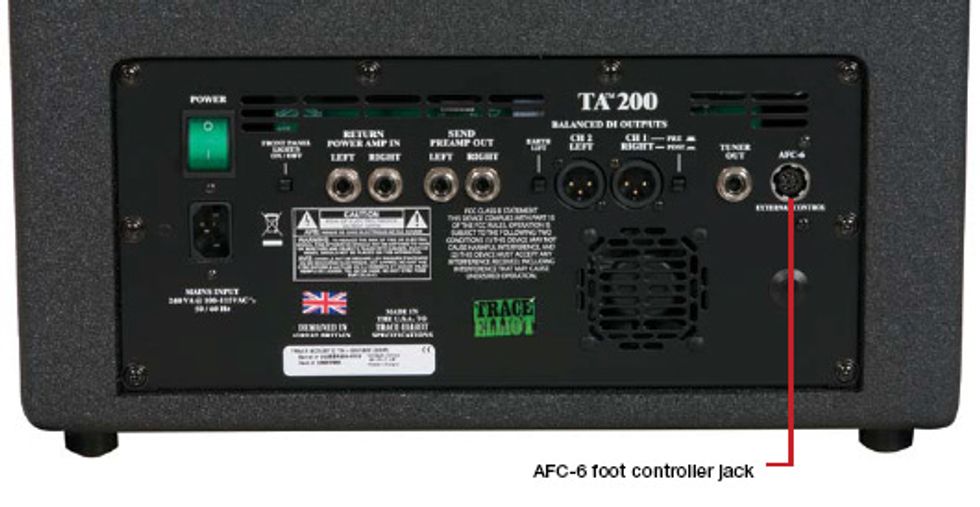
Forceful and Forgiving
It’s pretty easy to get a good basic
guitar tone once you plug in. Armed
with a Boucher Spruce Goose 000, I
didn’t have to do much to get a satisfyingly
rich and yet brilliant sound. I
dialed in just a taste of reverb, and
right there, I was pretty happy.
The TA200 gets loud, which is great. I
would feel comfortable with it in a fairly
big room full of people, maybe a mediumto-
large sized coffeehouse. At higher volumes,
I’m happy to say it doesn’t set your
teeth on edge, and there doesn’t seem to be
any unwanted boost to the highs and highmids.
When you get back a few feet, the
TA200 has plenty of warmth and character,
and lets the whole range of the guitar sing.
As a stage monitor, this amp could be
incredibly effective as well. You can choose
whether to send the signal out to a mixer
pre- or post-EQ, so you can send a flat
signal to the house and dial in whatever
makes you happy onstage.
I played with the effects for a while and
found some interesting sounds to explore.
The effects are not always transparent,
though you can dial in more natural
sounds with the Parameter control. The
dotted-eighth-note delay was really fun to
play with, though the chorus lent a bit of
midrange. The flanger and phaser seemed
to impact the basic tone least.
The Verdict
Feature packed, lightweight, and perfectly
portable, the TA200 is a solid choice for
small-to-medium rooms. It sounds rich and
full, and the reverb is non-intrusive and
natural sounding. If you require a lot of
effects, then this amp makes that easy as pie,
with two dials and a footswitch. The cover
is fantastic, and it’s included with the price,
as are the footswitch and cable, which is
almost unheard of these days.
There’s a lot more competition in the
acoustic amp market than when Trace built
their first acoustic amps. But Trace packs a
lot of functions and power into the TA200
that are certain to make this amp a contender
for any performing acoustic player
that looks beyond simple guitar and amp
tones to make their musical statements.
Buy if...
you want a high quality, great sounding amp with lots of built in effects in a convenient, painless package.
Skip if...
you aren’t into effects.
Rating...
Street $1250 - Trace Acoustic - traceelliot.com |


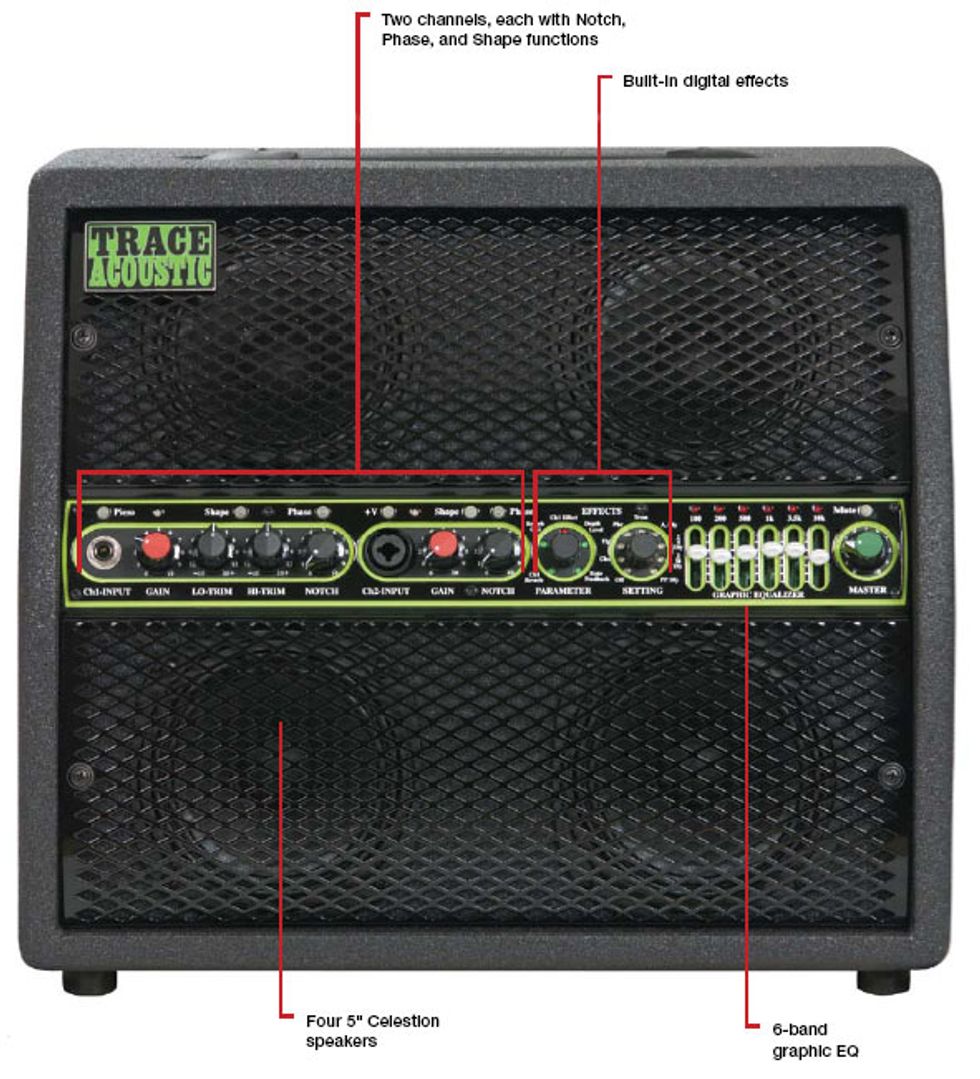





![Rig Rundown: John 5 [2026]](https://www.premierguitar.com/media-library/youtube.jpg?id=62681883&width=1245&height=700&quality=70&coordinates=0%2C45%2C0%2C45)






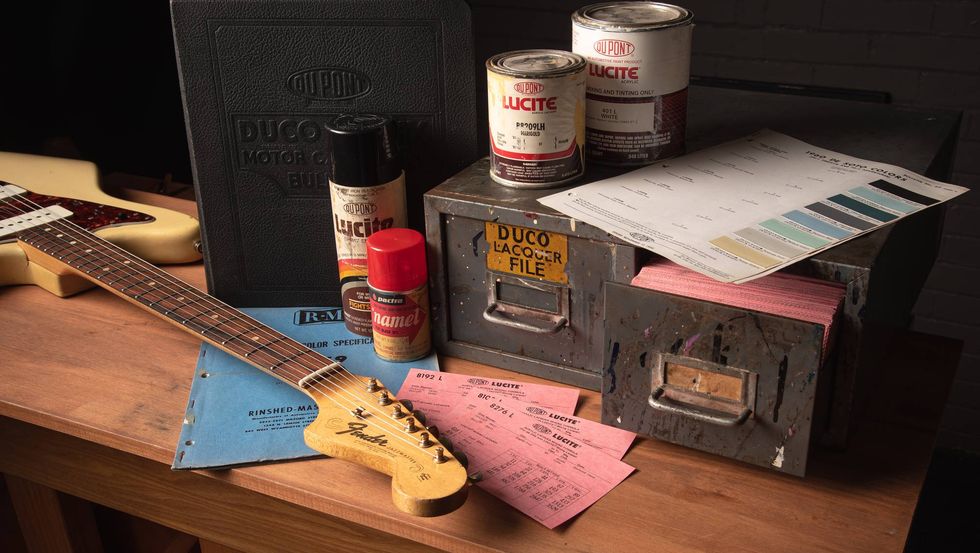
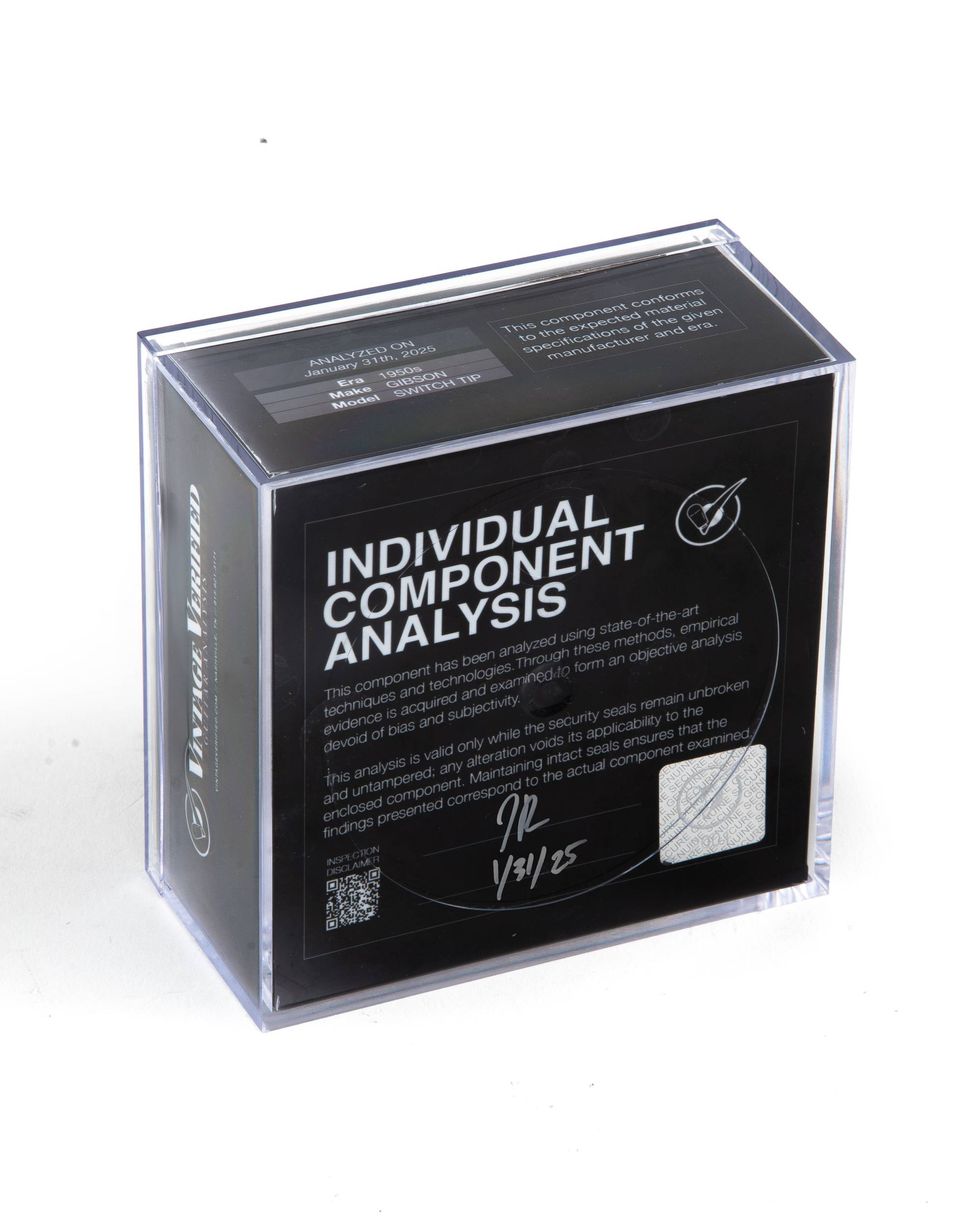
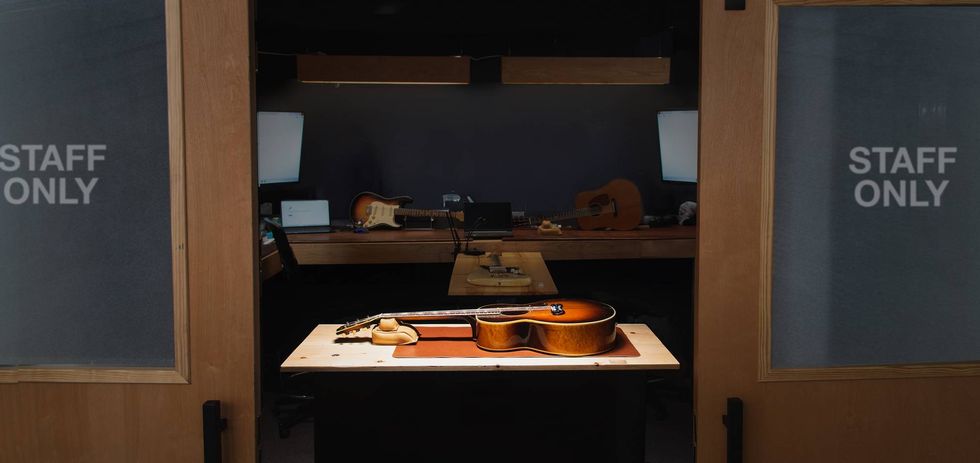
![Rig Rundown: Russian Circles’ Mike Sullivan [2025]](https://www.premierguitar.com/media-library/youtube.jpg?id=62303631&width=1245&height=700&quality=70&coordinates=0%2C0%2C0%2C0)







